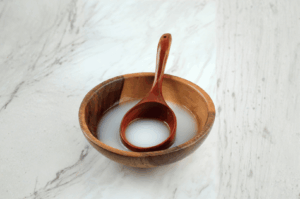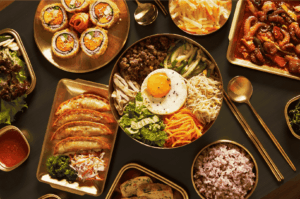
Discovering the Soul of Korean Cuisine
South Korea captivates food explorers with its unique blend of tradition, bold flavors, and lively communal dining. As highlighted in any thorough Asia’s food guide, the Korean table is centered around harmony—balancing spicy, savory, sweet, and sour notes, while transforming every meal into a social event.
At the heart of Korean cuisine lies fermentation, seen in staples like kimchi—a type of pickled cabbage that is spicy, tangy, and teeming with healthy probiotics. Every household treasures its own recipe, making kimchi as diverse as the regions themselves. Kimchi and bibimbap are among the most famous dishes and popular Asian dishes, celebrated for their cultural significance and unique flavors. Another icon, bibimbap, layers seasoned vegetables, marinated meat, and fried egg atop steamed rice, which is then mixed with gochujang (chili paste) for maximum flavor and visual appeal.
Barbecue fans relish samgyeopsal, thick slices of pork belly grilled at the table and wrapped in crisp lettuce with garlic, ssamjang (spicy paste), and banchan (side dishes). This experience highlights Korea’s cherished culture of shared meals and conversation, and showcases traditional cooking methods such as grilling and fermentation. Jeonju’s bibimbap is considered the gold standard, brimming with an array of fresh toppings. Busan’s eomuk (fish cake) brings coastal flair, offering warm, hearty street food often enjoyed by the seaside.
Korean cuisine is more than bold spices—it’s about contrasts, balance, and bringing people together. This spirit infuses every aspect of the culinary experience, inviting you to savor the flavors and the company.
Discover Authentic Flavours Across Asia's Culinary Landscape
This comprehensive Asia dining guide to South Korea reveals a culinary culture that celebrates diversity, tradition, and the healing power of food and drinks. Through this vibrant world of food and drinks, South Korea provides an endless adventure—one best savored with curiosity and an open heart.
Latest Articles About South Korea
Traditional Korean Sikhye: Sweet Rice Punch Through the Seasons
In the vibrant world of Korean food, beyond the fiery spice of gochujang and the savoury comfort of bulgogi, lies a gentler, more subtle delight. Meet traditional Korean sikhye (식혜), a beloved Korean sweet rice punch that holds a special place in the nation’s heart. With its cloudy, amber hue and delicate sweetness, this drink…
Read MoreAuthentic Jeonju Bibimbap: Why Korea’s Culinary Capital Makes It Best
Picture this: A steaming Korean rice bowl is placed before you in Jeonju, South Korea. Vibrant arcs of seasoned bean sprouts, glossy strips of Korean beef, a golden runny yolk resting atop perfectly cooked mixed rice, and a dollop of rich red bibimbap sauce invite you to mix it all together. As you stir, the…
Read More
